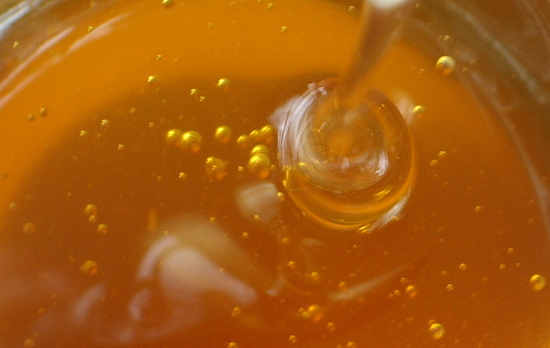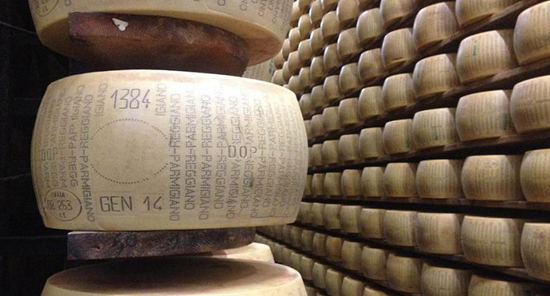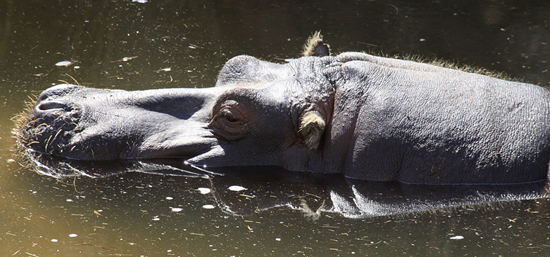
Food is the perfect metaphor for life. It can strike us as funny, as when British couples go in for some "toad-in-the-hole," enjoy the occasional "bubble and squeak" or gobble down some "spotted dick." It can also turn tragically bizarre, as when, in 1919, a Boston storage tank burst, letting loose a destructive 2.3-million-gallon (8.7-million-litre) wave of molasses that killed 21 people and demolished several structures [source: Schworm].
And, like life, food is also precious, often in surprising ways. Take the case of the Great Canadian Maple Syrup Heist of 2012, in which 6 million pounds (2.7 million kilograms) of syrup were stolen from the Global Strategic Maple Syrup Reserve (yes, that's a thing). You might think that syrup stealing should be filed under funny, but there's nothing laughable about a commodity that at the time of the heist was trading at US$1,800 per 620-pound (281-kilogram) barrel, or roughly 13 times crude oil's then-going rate [source: Borrell].
For our cornucopia of kooky comestibles, we've pulled from all three categories - and then some. We have silly food names, cheeses both bankable and burning, and fare that sounds like a dare. Bon appétit!
10. Mellified Man: It's the Taste of Nuts and Honey
While Europe was enduring the long intellectual Dark Ages that followed the collapse of the Roman Empire, the Muslim world was experiencing a flourishing golden age of intellectual and cultural achievement. But if, as philosophers have long contended, we can judge a culture's character by what it eats, then here's one honey of an "Oh boy, I think I'm going to be sick."
The recipe is simple: Take one elderly Arabian fellow, feed him nothing but honey, wait until he dies and then bury him...in more honey. Allow the man to marinate for 100 years, then dig him up and sell the "mellified man" (from the Latin "mel" for honey) in your local grand bazaar for a substantial stack of coins [sources: Horrible Histories; Roach].
Was mellified man a real thing? It was recorded in a 16th-century Chinese pharmacopeia, Li Shizhen's "Compendium of Materia Medica," but even the person who recorded it admitted it was hearsay at best [source: Heater]. Like most honeyed words - and a nice caramel - it's probably best taken with a grain of salt.
9. Stack That Cheese - as Loan Collateral
Formaggio fans know the Emilia-Romagna region of northern Italy as the only place in the world legally entitled to call its hard, dry skim-milk cheese Parmigiano-Reggiano. But within the world of finance, this home to Ravenna, Bologna and Parma has also gained fame for a pecuniary peculiarity: It's home to a bank that accepts the celebrated cheese as collateral [sources: Migliaccio and Rotondi; Sirletti and Cinelli].
Credito Emiliano SpA (aka Credem) stores and cares for around 450,000 80-pound (36-kilogram) wheels of aging Parmigiano-Reggiano at a time. That stacks up to around 160 million euros, or (very roughly) US$176 million worth. By accepting the curd-based collateral, the bank provides a valuable service to local cheese producers, who must finance milk-buying and storage while their products cure [sources: Migliaccio and Rotondi; Sirletti and Cinelli].
Loans from Credem can reach as high as 80 percent of the cheese's market value. Each wheel bears a branded serial number, which became important in February 2009, when thieves burrowed their way into one depository and rolled off with 570 pieces before police nabbed them [source: Migliaccio and Rotondi]. That must have really grated.
8. Cheese: Of Fire and Flies
Other countries may require the aid of spirits to set their respective cheeses aflame, but the land of fjords produces a brown cheese that burns like a tire fire all on its own. Actually, brunost is not technically a cheese because, like ricotta, it's made not only of curds but also of whey, the liquid left over after milk has been curdled and strained. The result is a sweet, brown block of sticky, caramelized lactose, a brick of fat and sugar that burns like nobody's business - enough so that a spilled, flaming truckload shut down a Norwegian tunnel for four days [source: Coleman].
Of course, there are reasons you might want to set cheese on fire, and we're not talking about fondues or saganakis. Take Sardinia's illegal maggot-ridden cheese casu marzu. In a possible case of "if you can't beat 'em, eat 'em," this putrid pecorino requires some larval love to fully come alive. With a little encouragement from cheese makers, flies lay eggs in the product, which then hatch into larvae. As the maggots crawl through the cheese using their tiny teeth, they release a putrefying enzyme essential to the product's characteristic flavour and (gulp!) mouth feel. Patrons are advised to cover their eyes, ostensibly to prevent wayward maggots from jumping into them [source: Oldfield and Mitchinson].
7. Christmas Culinary Curiosities Killed the Cat
In Italy, nothing says Christmas like a slice of panettone. Photo: Officina Giotto/Wikimedia Commons.
In the U.S., Christmas is associated with a sort of quid pro quo: People who celebrate Christmas leave cookies and milk for Santa Claus, and he leaves edible treats in their stockings. But other holiday traditions around the world incorporate food as well.
Take some of Europe's historical yuletide traditions, which may or may not still hold true (leave a comment if you know). On Dec. 5 in Austria, the eve of St. Nicholas Day, good children used to receive candy in their shoes, while naughty ones got coal...or potatoes. In Bavaria, farmers once encouraged a bountiful harvest by asking their fruit trees on a luncheon date. If the arboreal invitees didn't show, the farmers brought lunch to them - or, rather, to the spirits that they believed dwelled inside them. On New Year's Eve, Spaniards have tried to court good luck (or a Heimlich) by gobbling down a dozen grapes while the clock struck midnight. In Sweden, a white-clad girl with candles in her hair would wake her family on Christmas with special wheat cakes called lussekatter, in memory of St. Lucia [source: Reuters].
Yuletide can be a tough time for cats in Europe. Icelanders bedecked their family felines in bows lest they be mistaken for the shape-shifting Christmas Cat, which reputedly gobbled up children who received only toys for Christmas [source: Reuters]. But they had it better than some cats in Switzerland, where a small number of diehards still eat the domestic variety for their Christmas meals [source: BBC].
6. How Hippo Nearly Became America's Other Dark Meat
The turn of the 20th century was marked by a bold optimism concerning what was possible through science and industry coupled with a willingness to explore the most outlandish options available. Faced with a problem, real or perceived, you could count on someone to offer solutions ranging from the impractical to the morally dubious.
At the time, the U.S faced a serious problem: a booming population and not enough meat with which to feed it. Proposals ranged from introducing antelope to establishing ostrich farms, but probably the most remarkable remedy lay in the proposed use of hippopotamuses as a local meat source. The advantages were several. Hippos would live and feed in areas unfit for traditional cattle, and the so-called "lake cows" (as at least one marketing-savvy editorial called them, even if hippopotamus literally means "river horse" in Greek) would remove a blight from Louisiana's bayous to boot, an invasive water hyacinth that was clogging waterways and knocking off fish [source: Miller].
Despite the support of such luminaries as former President Teddy Roosevelt, the idea eventually gave way to burgeoning industrial farms.
5. The Detonation Tenderizer: A Literal Flavour Explosion
Over the years, the U.S. Patent and Trademark Office has rounded up herds of ideas for tenderizing meat, from the familiar (spiky hammers, enzymatic tenderizers) to the outlandish (using pressure pulses or acoustic waves on submerged meat). But none packed quite the punch of U.S. Patent No. 3,492,688 A, understatedly titled "Apparatus for tenderizing food." Submitted by Charles S. Godfrey in 1966, the method called for breaking up tough fibres in subprime cuts via high explosives. Bomb and beef would bathe in the same water-filled tank to maximize the effect [source: USPTO].
Godfrey thought that the high explosive approach would blow past the shortcomings of other pressure techniques by creating a much more dramatic and sudden pressure change at the shock front. He might have been onto something, since several other patents have since built on the idea, and at least one company has put it into practice [sources: Lee; USPTO].
A pioneer of early nuclear weapons research, Godfrey was also a seasoned veteran of explosive technologies. In addition to helping design the diminutive test nukes set off on Eniwetok Atoll in the 1950s, he held patents in high velocity explosives and shaped explosives and the use of explosives in rock fracturing and excavation [source: Los Angeles Times].
4. Pica: So Many Words, So Many Food Fixations
We all have our share of unusual cravings, but few are as startling as the wide range of materials consumed by people with the disorder pica, the repeated eating of largely non-nutritive substances like wood, soil or paint chips. The word pica derives from the medieval Latin name for magpie, a bird reputed to eat just about anything [source: T.E.C. Jr.].
Thanks to Greek and Latin, there's a name for every neurosis, and the many flavours of pica are no different. Xylophagia describes the consumption of paper, pencils, tree bark or other woody items. Chewing and eating glass is the habit of those with hyalophagia, and of course there's also urophagia (urine), coprophagia (feces), geophagia (dirt), autosarcophagy (eating bits of oneself) and, yes, anthropophagy (human flesh).
People with trichophagia chew and/or swallow their own hair, which can result in a dangerous trichobezoar (hairball) that blocks the intestines and requires surgery. In 2007, surgeons removed a 10-pound (4.5-kilogram) trichobezoar that had completely filled the stomach of an 18-year-old woman [sources: CNN; Grant and Odlaug].
Such compulsions are frequently associated with a psychological condition or learning disorder. The prevalence of pica varies from 4 to 26 percent among the institutionalized, and the condition can co-occur with Kleine-Levin syndrome, mental retardation and schizophrenia [source: WebMD]. But it also can crop up among otherwise healthy children and in men and women of all ages and cultures, sometimes in response to a dietary deficiency [sources: Gowda et al.].
3. The Pickle-ice-cream-flavoured Mystery of Pregnancy Cravings
The scene depicting a pregnant woman dispatching her mate for pickles and ice cream in the wee small hours is so trite as to qualify as a stereotype, but it's rooted in a familiar phenomenon. Being pregnant can cause unusual cravings, drive a desire to double down on old habits or bring on new and strong aversions. Yet researchers still don't fully understand the biological and behavioural mechanisms behind these hankerings [source: Manejwala].
A few patterns have emerged over the years. For example, an expecting mother's cravings tend to fall within culturally available fare; in Tanzania, women crave (in order) meat, mangoes, yogurt, oranges, plantains and soft drinks, whereas American women crave dairy and sweet foods. Connections have also emerged between pregnancy-linked hormone shifts and an increase in neuropeptide Y, a hypothalamus-born chemical messenger associated with appetite in general [source: Manejwala].
So what inspires specific cravings? It's possible that some yens are meant to counter the odd smells, strange tastes, phantom odours and food aversions that can crop up during pregnancy. But this is only one possibility and requires further study [source: Manejwala].
2. The Nose Knows Numminess
We all recognize the role of smell in whetting our appetites, conjuring emotions and stirring memories, yet those little buds on our tongues still get most of the credit for detecting taste. According to researchers in the field of neurogastronomy, however, we have it backward.
Taste buds evolved to detect basic notes of sweet, salty, sour, bitter and umami (the savoury flavour of mushroom or soy sauce) to help us distinguish energy-rich carbohydrates, find essential salts, test foods for ripeness, detect toxins and identify proteins [source: Levin]. But it's the sensation of smell - specifically, the retronasal smells that waft into the nasal cavity from the mouth as we savour food - that forms the fuller picture of flavour in our brains. Smell is so nuanced that scientists have compared it to sight for the way it forms "pictures" of millions of flavour combinations and determines resemblances among them. Research has further linked the sense of smell to psychological well-being and neuroplasticity [source: Marano].
Molecular gastronomists, who try to understand the physics and chemistry of food for artistic and culinary effects, make careful use of odorants and aromatics in their creations, but the interactions between saliva and food make isolating the key smell-ecular elements difficult [source: This]. Oh, well. There's always marketing.
1. A Food by Any Other Name
Foods are known by many names. Some refer to subtle distinctions, as coriander and cilantro refer to the seeds and the vegetative pieces, respectively, of the Coriandrum sativum plant. Others might reveal cases of mistaken identity, as when many Americans each Thanksgiving mislabel sweet potatoes as yams, when in fact they are two separate plants [source: North Carolina Sweet Potato Commission].
Then there are those foods that assume new monikers for marketing purposes. Canola (a portmanteau of "Canada " and "ola" for oil) is actually a specially bred rapeseed oil rebranded to avoid negative associations with the word "rape" (rape, or Brassica napus, is a plant in the mustard family) and possibly to distance it from earlier versions of rapeseed oil, which were toxic to humans [source: Mikkelson]. Kiwifruit is not from New Zealand at all - it's a Chinese gooseberry rebranded by exporters to avoid negative associations in Cold War American markets. It's also not a gooseberry, so it's just as well that they changed its label [source: Ministry for Culture and Heritage].
The Patagonian toothfish (Dissostichus eleginoides) was renamed "Chilean sea bass" to better whet customer appetites and was so successful that it now faces overfishing, despite not being a sea bass at all [source: Fabricant]. For similar reasons, restaurant customers now know the "slimehead" (Hoplostethus atlanticus) as the far more appealing "orange roughy" [source: Allen].
A rose is a rose is a rose, but cheap hake sells better as scarlet snapper [source: Jacquet and Pauly].
Author's Note:
We live in a time of fascinating food extremes, from factory farms to local food movements. Food deserts, climate change and regional water crises, to say nothing of livestock treatment and health issues, have moved food shopping in the industrialized world into the realms of ethics and social justice.
In the past, population numbers like the ones we now know were considered impossible. Scientific advancements such as nitrogen fixing helped to stave off a looming food crisis in the early part of the 20th century, and economists today tout the power of technology to conquer hunger. Yet a planetary calorie ceiling is inevitable, and long before we reach it we might find ourselves eating far less socially palatable foods than mere maggoty cheese. Food for thought.
Related Articles:
More Great Links:
Article Sources:
1. Allen, Vanessa. "'Pilchards' and 'Slimehead' Fish Renamed to Boost Popularity." The Daily Mail. Sept. 24, 2007. (April 7, 2015)
2. BBC. "Stop Eating Cats and Dogs Say Animal Rights Campaigners in Switzerland." Nov. 26, 2014. (April 6, 2015)
3. Borrell, Brendan. "The Great Canadian Maple Syrup Heist." Bloomberg. Jan. 2, 2013. (April 24, 2015)
4. CNN. "Doctors Untangle the Strange Case of the Giant Hairball." Nov. 22, 2007. (April 6, 2015)
5. Coleman, Korva. "Burning Cheese Closes Norwegian Road for Days." NPR. Jan. 23, 2013. (April 6, 2016)
6. Fabricant, Florence. "Chilean Sea Bass: More Than an Identity Problem." The New York Times. May 29, 2002. (April 7, 2015)
7. Gowda, Mahesh et al. "An Unusual Case of Xylophagia (Paper-Eating)." Industrial Psychiatry Journal. Vol. 23, no. 1. Page 65. Jan-Jun 2014. (April 7, 2015)
8. Grant, Jon E. and Brian L. Odlaug. "Clinical Characteristics of Trichotillomania with Trichophagia." Comprehensive Psychiatry. Vol. 49, no. 6. Page 579. (April 7, 2015)
9. Heater, Brian. "From Ballistic Gelatin to Mummy Confection: The Grossest Recipes of Mary Roach." Wired. April 2, 2013. (April 24, 2015)
10. History Group of the New Zealand Ministry for Culture and Heritage (Ministry for Culture and Heritage). "Chinese Gooseberry Becomes Kiwifruit: 15 June 1959." New Zealand History. Sept. 2, 2014. (April 7, 2015)
11. Horrible Histories. "Mellified Man." YouTube. (April 6, 2015)
12. Jacquet, Jennifer L. and Daniel Pauly. "Trade Secrets: Renaming and Mislabeling of Seafood." Marine Policy. Vol. 32. Page 309. 2008. (April 7, 2015)
13. Lee, Bill. "Hydrodyne Exploding Meat Tenderness." AgResearch Magazine. U.S. Department of Agriculture. June 1998. (April 6, 2015)
14. Levin, David. "Tour the Tongue." NOVA Science NOW. June 6, 2009. (April 7, 2015)
15. Manejwala, Omar. "What Really Causes Pregnancy Cravings?" Psychology Today. June 11, 2013. (April 6, 2015)
16. Marano, Daniel A. "When It Comes to Taste, Your Nose Knows More Than Your Tongue." Sun Sentinel. Dec. 26, 2012. (April 7, 2015)
17. Migliaccio, Alessandra and Flavia Rotondi. "In Italy, Parmesan is as Good as Money." Bloomberg. Aug. 16, 2009. (April 6, 2015)
18. Mikkelson, Barbara. "Oil of Olé." Snopes.com. Aug. 26, 2103. (April 7, 2015)
19. Miller, Greg. "The Crazy, Ingenious Plan to Bring Hippopotamus Ranching to America." Wired. Dec. 20, 2013. (April 6, 2015)
20. North Carolina Sweet Potato Commission. "What is The Difference Between a Sweet Potato and a Yam?" (April 7, 2015)
21. Oldfield, Molly and John Mitchinson. "QI: Some Quite Interesting Facts About Cheese." The Telegraph (UK). Oct. 17, 2012. (April 6, 2015)
22. Reuters. "Christmas Customs Different in Many Lands." Chicago Daily Tribune. Dec. 25, 1957. (April 6, 2015)
23. Roach, Mary. "Stiff: The Curious Lives of Human Cadavers." Norton. 2004.
24. Schworm, Peter. "Nearly a Century Later, Structural Flaw in Molasses Tank Revealed." The Boston Globe. Jan. 14, 2015. (April 24, 2015)
25. Sirletti, Sonia and Francesca Cinelli. "Credito Emiliano Falls on Estimate for Higher Costs." Bloomberg. April 11, 2014. (April 6, 2015)
26. T. E. C. Jr. "The Origin of the Word Pica." Pediatrics. Vol. 44, no. 4. Page 548. Oct. 1, 1969. (April 6, 2015)
27. This, Herve. "Molecular Gastronomy: Exploring the Science of Flavour." Columbia University Press. 2013.
28. Travis-Henikoff, Carole A. "Dinner with a Cannibal: The Complete History of Mankind's Oldest Taboo." Santa Monica Press. 2008.
29. U.S. Patent and Trademark Office. "Patent No. U.S. 3,492,688 A: Apparatus for Tenderizing Food." Feb. 3, 1970. (April 6, 2015)
30. WebMD. "Mental Health and Pica." July 23, 2012. (April 6, 2015)










No comments:
Post a Comment
Please adhere to proper blog etiquette when posting your comments. This blog owner will exercise his absolution discretion in allowing or rejecting any comments that are deemed seditious, defamatory, libelous, racist, vulgar, insulting, and other remarks that exhibit similar characteristics. If you insist on using anonymous comments, please write your name or other IDs at the end of your message.